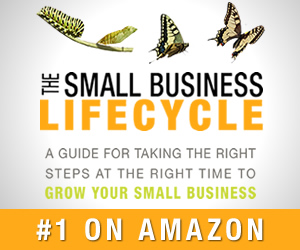With all the newfangled marketing gizmos, fancy social media platforms, and mobile technology, traditional advertising is often treated like the black sheep of marketing. I’ve even heard a few people go so far as to herald the death of print advertising.
But reports of the death of this and other traditional marketing tactics have been greatly exaggerated.
Sure, the newer, younger, and shinier tools are sexy and exciting! The cost is low and our perception of their reach is high. Traditional advertising pales in comparison. It’s definitely old school. Square. Retro.
Ineffective.
Hey! That last bit was uncalled for, don’t you think? I don’t mind a little gentle teasing. After all, it is hip to be square, retro is all the rage right now, and old school can be rather charming and classically elegant. So, I’m okay with those descriptions. But to refer to traditional advertising as ineffective—well, that’s where I draw the line.
While it is true that traditional advertising is not the right marketing tactic for every business, that doesn’t mean it should be dismissed out of hand. For some businesses, traditional advertising is a powerful and effective channel of communication.
It all depends on who you are trying to reach.
If you’re trying to reach people all over the country, traditional advertising may not be the best tool for the job. But what if that isn’t the case?
Imagine that you are the owner of a small, fun, and funky café in a tourist town. You have a number of regulars, all of whom are locals and many of whom bring their laptops so they can get some work done as they enjoy fresh-baked pastries and excellent coffee. These folks know you and each other and they love the vibe of the café.
But this is also a tourist town, so for the café to thrive, you need to attract both locals and tourists. People come from all over the country to enjoy the outdoor adventures typical of your mountain resort community. But how do you reach them?
One way is through traditional advertising. Every hotel, campsite, adventure outfitter, and tourist information center provides a guidebook to their guests. That guidebook is also included in the information packet that the state tourism bureau sends out to those who request information from the website. A well-designed advertisement in a publication like this will get your message in the hands of most of the tourists to the area.
But getting your message in the hands of the right people is only the first step. The real question is whether the advertisement results in an increase in business at the café.
How do you know if your advertising effort is effective?
Traditional print advertising can be expensive, so you want to make sure it is actually effective. At a busy café, it’s almost impossible to ask every customer how they learned about you. And it’s even more difficult to track that information.
That’s where you can make your advertisement do the work for you. What if you added an incentive and included a coupon as a part of the advertisement?
Get a free specialty drink with any order of $15 or more!
It’s a simple and clear call to action and a wonderful incentive to come in to your café. And, because your customers will have to turn in the coupon to get the free drink, you’ll be able to track the effectiveness of your advertising campaign. If you decide to place an advertisement in multiple locations, you can add a simple code to identify the source of the advertisement. These simple steps will let you know exactly how effective your advertising campaign is—and which advertisements or publications get the best results.
Which marketing tactics are best for your business?
It can be tempting to disregard or adopt certain marketing tactics simply because they are so prevalent. But just because everyone and their brother is in love with Twitter or tells you that you have to be on Facebook, that doesn’t mean that it’s true. Similarly, while traditional marketing tactics may have fallen out of favor, it doesn’t mean that they are not effective.
To determine which marketing tactics work best for your business, you need to know yourself, know the available options and have a clear marketing strategy. The tactic you choose will not be successful if you absolutely dread it. So, if you positively cringe at the idea of being on Facebook or Twitter, don’t do it. Try the other options. See what works for you and your business. Be consistent and make sure it’s sustainable. You don’t have to be everywhere all at once.
This week, take some time to look at the marketing tactics you use to build your business. Are they the best tactics to connect you with your ideal client? How effective are they? Are there ways you could make them even more effective? Which marketing tactics really resonate with you? Which ones drain you? Choose just a few tactics that really work for you—and then evaluate them to see if they work for your business. How have you selected the right marketing tactics for your business? Please share your questions, tips and experiences in the comments. We’d love to hear from you!
Photo Credit: 1950sUnlimited



Speak Your Mind